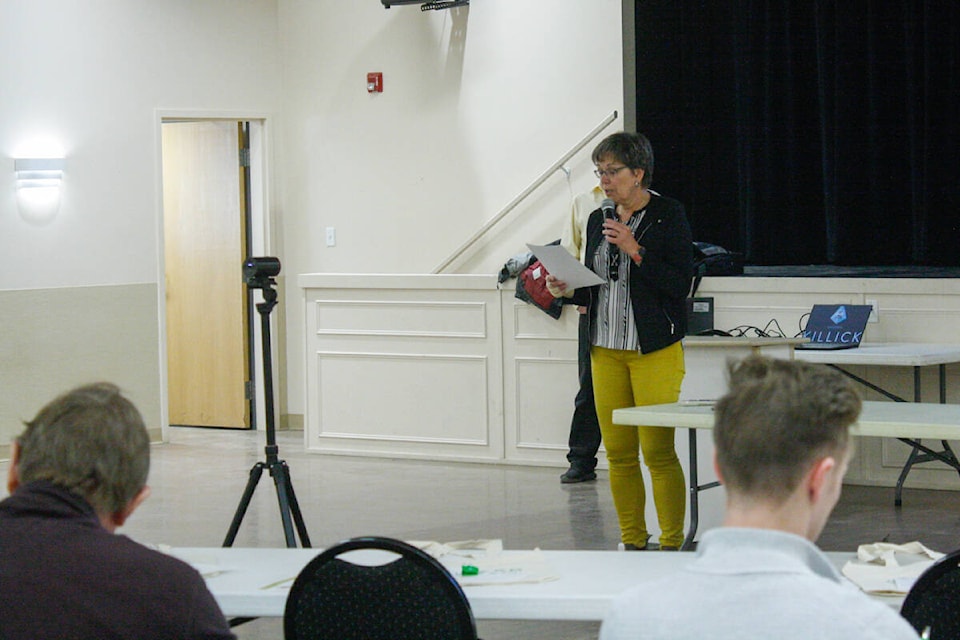Carson Ellis
For the Stettler Independent
The Battle River Alliance for Economic Development (BRAED) held its third annual Agriculture Industry Forum. The event was held at the Castor Community Hall on Thursday, March 14 and had a series of speakers from a variety of fields related to agriculture and the economy.
Caroline McAuley acted as emcee for the event. McAuley is the Executive Director of the Alliance. BRAED chair, and County of Paintearth reeve, Stan Schulmeister spoke of efforts in the district to improve the overall economic development of the area including wind and solar projects and developing strategies to bring water to more areas of the county.
The first speaker of the day was Todd Assen who is a water resources engineer with the Alberta Government Drought Response Team. He talked about issues from our El Nino winter which means it will be warm and dry, with a 62 percent chance of being dry through June.
Assen said the Battle River basin reserves were sufficient during last year’s drought conditions, however, there are concerns about storage levels this year. Assen says that they are working with existing water users in the Battle River basin to help stem any possible water shortages and the users were working to do whatever they could.
The Alberta Government’s top priorities in drought conditions are public health and safety for domestic use and ensuring supply for combating forest fires in the province. Assen explained that if an emergency under the Water Act was declared by cabinet it would become a matter of picking ‘winners and losers’ regarding who gets water and who doesn’t, but that all efforts are being made to avoid ‘that nightmare’ situation. Efforts include education and communication with water users, as well as working with municipalities.
Susanna Bruneau was the next speaker in the morning session.
Bruneau is the Stewardship Coordinator for the Battle River Watershed Alliance (BRWA). The BRWA is a non-profit advisory council that works to promote economic development, and watershed preservation for the Battle River and Sounding Creek watersheds. Bruneau says the Battle River basin is prairie-fed, not spring-fed like others in the province. This means that the basin can ‘feel’ drought right away.
Bruneau said her presentation was focused on water conservation because she says you can’t change the weather, but you can ‘change the land and how we use the land.’ Specifically natural infrastructure. This includes maintaining riparian land, shelter belts, and wetlands. It also involves changing the habits involved in water use such as alternative yards that require less water consumption.
Bruneau discussed beaver dams, which are a natural way to store water and slow water flow that helps recharge groundwater conditions which is beneficial for crops and the natural landscape.
Dams also release water during frozen months which helps maintain moisture during the winter. Bruneau explained that research into beaver ponds has led to techniques such as pond levelling devices that prevent beaver dams from blocking culverts and causing flooding on roadways. There is also the option of creating dams that provide the same benefits without the beavers.
Bruneau explained that a key part of water conservation is preserving and restoring the riparian land, which is the ribbon of land around waterways.
The Battle River area has approximately 10,000 kilometers of riparian lands which they assess and monitor.
